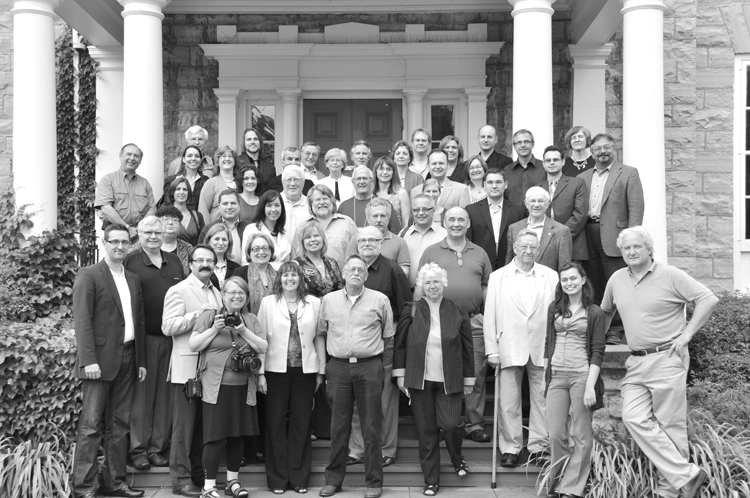
National Symposium on Internment Operations
By Marta Iwanek
It was a meeting of minds. More than 50 activists, scholars,
archivists, educators, museum curators, internee descendants and artists from
across the country met together 
“There are no more excuses that the money isn’t
there,” said Lubomyr Luciuk, who was one of the key leaders in bringing the
issue to light 25 years ago and now sits on the Canadian First World War
Internment Recognition Fund’s (CFWWIRF) Endowment Council which organized the
conference. “Now we need ideas.”
Between 1914 and 1920, about 8,500 men, women and
children, whom the government deemed as “enemy aliens” because they originated
from the Austro-Hungarian Empire were interned in 26 camps across
Topics during the conference brought up points on
the importance of connecting the issue to bigger issues such as that of
fundamental human rights and freedoms, how wartime xenophobia is just as
relevant today, as well as humanizing the story and trying to tell individual
stories of internees.
Work on the topic has been hardened by the fact
that there are no more internment survivors and many of the original Canadian
documents were destroyed by the government in the 1950s.
Bohdan Kordan, a researcher on the topic for 25
years and professor at the
Through the help of a grant from the Endowment Council,
he is beginning to culminate all his years of research into a scholarly book on
the enemy alien experience during WWI.
Fo r others it was a learning experience. “I know
my exhibit will change because of this weekend,” said Shirley Nickerson, manager
of the
r others it was a learning experience. “I know
my exhibit will change because of this weekend,” said Shirley Nickerson, manager
of the
Serbs, Hungarians, Croatians and others were also
interned because of where they came from. Another 80,000 people, mostly
Ukrainians were issued cards they had to carry at all times and were under
police supervision.
Diane Dragasevich represented the Serbian
Canadian community and is a member of the Endowment Council. She hopes that
more Serbs will apply to Council with projects on the internment, but admits
that awareness of the subject in the Serbian community is low. Roughly estimating, 400-500 Serbs were
interned. Most of them were single, young, new immigrant men who after their
traumatic experiences most likely returned home. “We’ve got a lot of research
to do,” she said. Dragasevich said the centennial of the internment operations
in 2014 resonated throughout the conference. “The centennial is something to
aim for to put things into context for that occasion. Whether it’s another
commemoration, [or] whether we succeed in getting more information about the
first national internment operations into the curriculum, we have a goal we can
look forward to for 2014,” she said.
Some current projects the Endowment Council has
helped fund include an internee exhibit at the Cave and Basin-Banff National
Park, an interpretive museum at Spirit Lake Camp, Que., a book of photographs
of all the internment camps by photographer Sandra Semchuk, and a 6 by 16 foot
public mural in Prince George, B.C. by artist Betty Kovacic on the
ethno-cultural experiences of communities affected by the internment
operations.
Gordon Gordey, CEO of Ukrainian Shumka Dancers,
also hopes to educate Canadians about the stories of the internees through art.
“An artistic expression can connect to Canadians in an emotional way,” he said.
The dance piece called Shumka Remembers: A tribute to those who served and
wished to serve is a multimedia piece with a section designated to
remembering the internment. However, Gordey said that after the symposium
weekend, he is thinking of creating a separate dance, focusing on the large
questions raised by
The conference ended with a memorial service at
The symposium served as a way to give the
Endowment Council direction and priorities for the future. “I think coming out
of this symposium, the important thing is for the people who attended to carry
forward the ideas that we heard,” Luciuk said. “It has to be spread to a much
larger group than the core group in the Ukrainian community that began this
campaign 25 years ago.”
PHOTOS
1 - A memorial service was held at Fort Henry to end the weekend
Symposium on Internment Operations in Kingston, Ontario
2 - Attendees of the Symposium on Internment Operations held in
Kingston, Ontario, June 17 to 20.